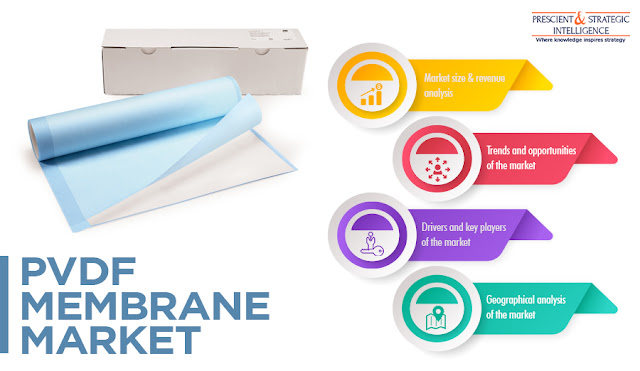Why Is Food and Beverage Sector Using PVDF Membranes?
The World Bank estimates that approximately 2.2 billion people across the world do not have access to safely managed drinking water services. Water pollution has become one of the greatest risks to sustainable development, economic progress, and poverty eradication, due to the gaps in the access to water supply and sanitation, surging rainfall variability, booming population, soaring pollution levels, and water-intensive patterns of growth. Thus, the burgeoning demand for clean water will boost the adoption of polyvinylidene difluoride (PVDF) membranes worldwide.
Moreover, the surging public awareness on the health issues arising due to the consumption of toxic food and beverages will accelerate the PVDF membrane market at a CAGR of 7.9% during 2018–2023. At this rate, the market revenue is expected to rise from $720.1 million in 2017 to $1,142.0 million by 2023. This will be because food and beverage companies use PVDF membranes to filter out toxic materials from edible products. These membranes are primarily used in beer brewing and for the removal of unwanted organisms from other food and beverages.
Additionally, the biopharmaceutical sector uses a large volume of PVDF membranes to filter unwanted substances from pharmaceutical products. These and other industries use hydrophobic and hydrophilic membranes to separate contaminants from products. At present, end users prefer hydrophilic PVDF membranes over hydrophobic ones because the former offer high flow rates, caters to the needs of the leading biopharmaceutical firms, and provides throughputs for solvent-based and mobile-phase chromatographic applications. Such membranes are based on the ultrafiltration, nanofiltration, and microfiltration technologies depending on their pore size.
Currently, PVDF membrane manufacturers, such as Membrane Solutions LLC, Bio-Rad Laboratories Inc., Arkema Group, General Electric Company, CITIC Envirotech Ltd., Danaher Corporation, Merck Group, Thermo Fisher Scientific Inc., Koch Membrane Systems Inc. (KMS), and Toray Industries Inc., are engaging in collaborations, product launches, and mergers and acquisitions. For example, in October 2017, Arkema Group announced its plan to expand the production capacity of its PVDF Kynar plant in China by 25%. The expansion was aimed at meeting the surging need for these membranes at water treatment plants.
According to P&S Intelligence, North America led the PVDF membrane market in the recent past owing to the increasing use of the membrane technology in the water and wastewater treatment, pharmaceutical, and food and beverage industries. At present, the water and wastewater treatment sector is witnessing substantial growth due to the burgeoning demand for water from several industries and booming population. Whereas, Europe emerged as the second-largest consumer of PVDF membranes in the preceding years due to the soaring demand for clean water.
However, the Asia-Pacific (APAC) region will consume these materials at the highest rate in the forthcoming years owing to their increasing requirement at water treatment plants. Currently, APAC is creating a huge requirement for reusable water on account of the rising scarcity of this life-sustaining resource in the region. This is resulting in the development of advanced membrane separation technologies for water reclamation. Moreover, the advancements in the life sciences and biopharmaceutical domains will fuel the adoption of PVDF membranes here.
Thus, the rising need for clean water and non-contaminated food and beverages will create a huge requirement for PVDF membranes.



Comments
Post a Comment